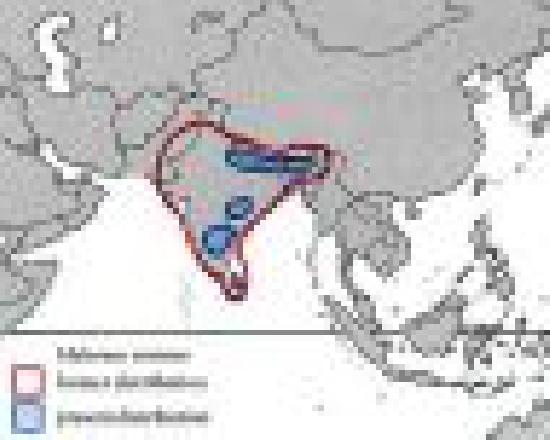English: Sloth Bear; French: Ours à longues lèvres; Bengali: Bhaluk; Gonds: Asol, Yerid, Yedjal; Hindi: Rich, Bhalu, Rinch, Adamjad; Ho-kol: Bana; Malabari: Panikaradi; Marathi: Aswal, Aswail; Oran: Bir-menai; Sanskrit: Riksha; Singhalese: Usa; Tamil: Kaddi, Karadi, karidee; Telegu: Elugu, elugu bunti.
Former distribution: The Indian subcontinent from Nepal and the Himalayan foothills south through the Indian Peninsula into Sri Lanka.
Present distribution: Southern Nepal and Assam, and in restricted areas in the southern peninsula of India (Andra Pradesh, Karnataka, Kerala and Tamil Nadu States).
Behaviour: Preferred habitat: lowland, evergreen, moist and dry deciduous forest with rocky outcrops; activity mainly nocturnal; living singly or in pairs. They are omnivorous: diet includes plants, fruits, insects, honey, eggs and carrion.
Population status: Indeterminate. Estimated population: 10 000.
Brief notes:
Body weight: 90-115 kg
Head and body length: 150-200 cm
Tail length: 10-12 cm
Shoulder height: 60-90 cm
Gestation Period: About 210 days
Maximum age: Up to 30 years in captivity
Trophy: Skull length: 31.5 cm. Record SCI: 21 4/16 score.
Hunting methods: Stalking, from a hide, to a bait, with dogs.
Remarks: Populations are declining as a result of habitat loss, uncontrolled hunting, capture of pups and human disturbance; protected by law in India, Nepal and Sri Lanka. The control of populations should be enforced.
